This essay is highly speculative in nature and I have many doubts about many of the things stated below, but I have tried to coherently bring together distinct threads of early Indian history into an explanation for the great stratification of Jati-Varna
Ancient history is in general a tricky subject to delve into, but when it comes to ancient Indian history, the tricky becomes almost entirely speculative. The entire narrative is based on a series of texts, from the Vedic canon to Pali texts – none of them are dated precisely in absolute terms. The paucity of inscriptions from ancient India makes dating much more difficult as oral texts are much harder to accurately date.
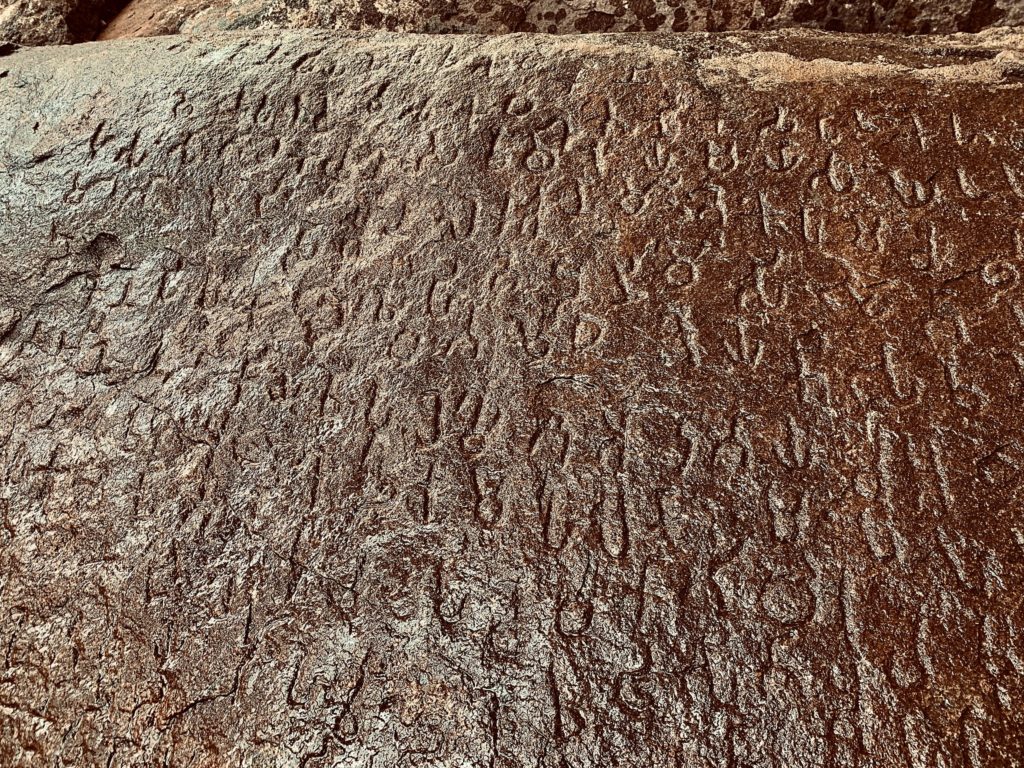
One of the early inscriptions from Ancient India, Ashoka’s 13th major rock edict from Kandahar reads
Except among the Greeks, there is no land where the religious orders of Brahmanas and Sramanas are not to be found, and there is no land anywhere where men do not support one sect or another.
Here Brahmanas are mentioned but not as a Varna per se but as analogous to various Sramanas (priests / philosophers). Some academics have come to regard the Sramana traditions as somewhat antagonistic to the orthodox Brahmanical traditions. However, the earliest written reference to these traditions, Ashoka’s Rock Edicts mention them always together. Patanjali and others too mostly mention them together and never as quite as antagonistic as later Sramana canon or modern scholarship would have us believe.
However, it is undeniable that one cannot be understood without the challenges presented by the other. Ahimsa and Vegetarianism are generally acknowledged (and contested) to be Sramana influences on Classical Hinduism. A lot of digital and literal ink has been spilled to answer the question of how these two currents have interacted and shaped each other – mostly through the lens of Ahimsa, Dha(r/m)ma, Moksha and only rarely Karma.
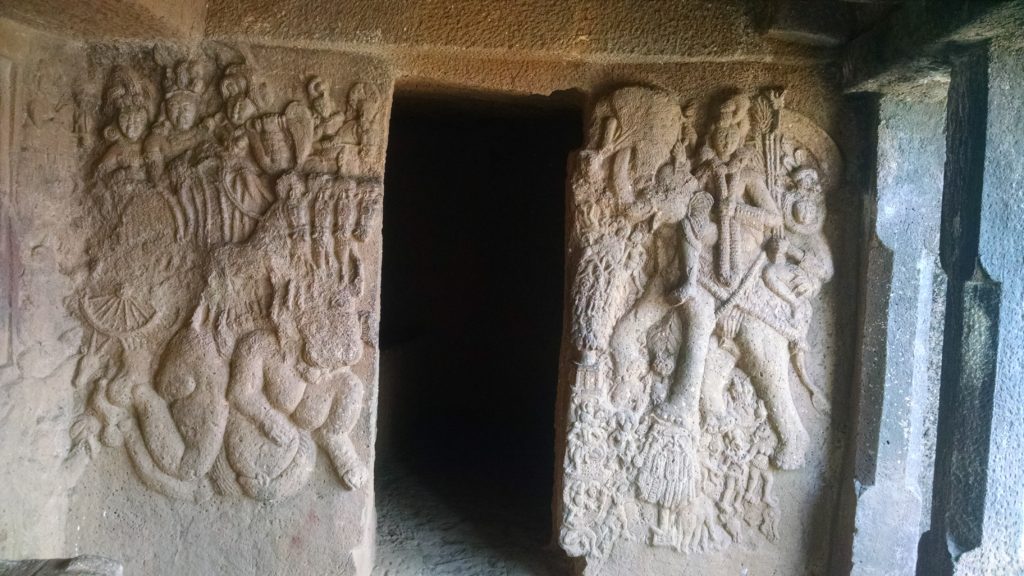
Johannes Bronkhorst’s Greater Magadha thesis offers a tenuous but interesting take on these interactions. The basic premise of the thesis is that the region of Greater Magadha was home to the Proto-Sramana traditions while the Kuru-Panchala region to the Vedic Brahmanas and that many ideas central to classical Hinduism like Karma, Rebirth, and Ayurveda came into it from the Sramana traditions of the Greater Magadha via the esoteric Upanishads (especially the ones which were composed in the horizon of Greater Magadha). The whole thesis rests on the revised chronology which only makes sense if the thesis is true – so I doubt the book is going to convince anyone. But it has catalyzed a rudimentary and dormant theory that came to my mind years ago while reading Ambedkar’s writings.
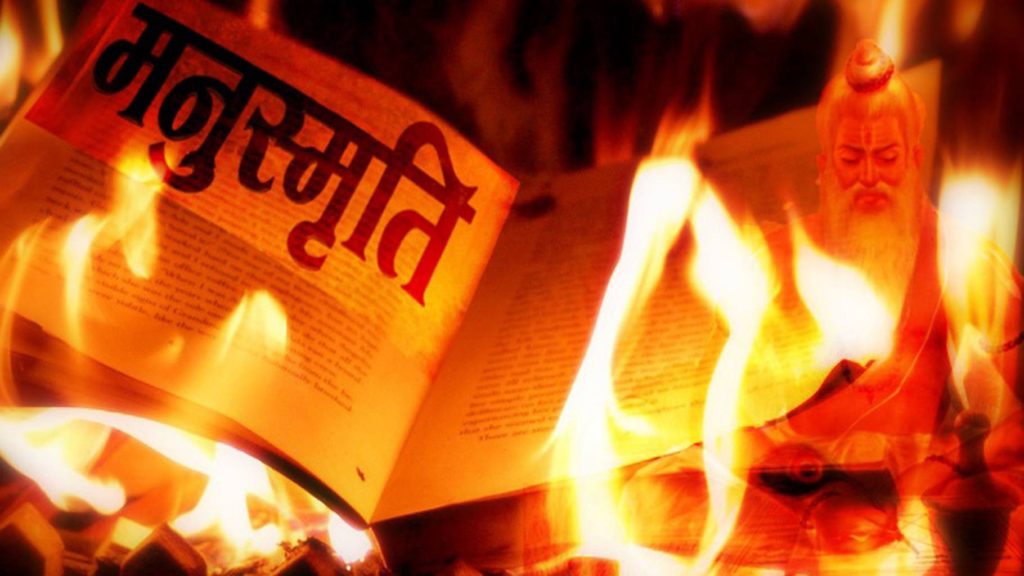
The composition of the Manava Dharma Shastra (100 BCE to 200 AD) is generally considered to be an indication (or instrument) of Varna ossification. The Varna system in some form ought to have existed (especially in the Gangetic heartland) since the late Vedic period (Purusha Sukta), yet both textual and genetic evidence points to this period as being one of great mixing. Hence it is fair to assume that whatever rudimentary Varna system existed, it was not very rigidly followed in these times. Also its important to note that traditional Varna system may have never been a reality south of the Vindhyas.
It is difficult to pin the Varna ossification to any particular political period. The only pan India ancient empire – the Mauryas are unlikely to have imposed any Varna hierarchy on their subjects as the pedagogic Ashoka doesn’t once mention Varna in his Rock Edicts. The Shungas are seen as the Brahmanical pushback against excesses of the Mauryan state but their power was both too limited in time and too restricted in region to have made any major impact. The same is true for most other political powers in the country for the next 500 years.
Brahmins had begun moving out of the Gangetic heartland as early as the late Vedic period itself. So why did the Varna system, suddenly begin to ossify centuries later? Surely some metaphysical, philosophical, and/or political explanation is required to make sense of this phenomenon. Also, Jati endogamy which is the true hallmark of the Indian Caste system cannot be explained by the Brahmanical Varna system – even the rigid one prescribed in the Manusmriti. The answers may lie in a core philosophy of the Indic faith systems.
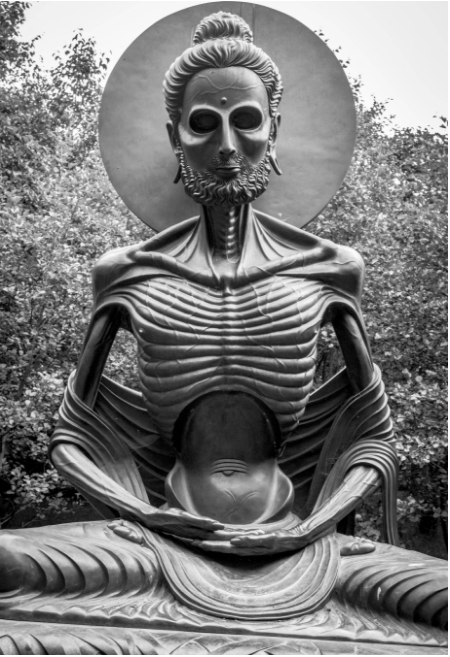
So what is the common characteristic that defines Indian religious thought? The answer is easy – the concept of Karma, Rebirth and Dharma. Even if we reject the thesis of Greater Magadha, we have to accept that the concepts of Rebirth and Karma are explored in far more detail in the Sramana schools – namely Buddhists, Jainas, and Ajivikas. The whole philosophical aim of the Sramana schools is to avoid Bad Karma to primarily get Good Karma and finally Moksha. This is in clear contrast with mainstream Vedic thought. Though the early Upanishads (Chandogya and Brihadaranyaka) touch the Karma doctrine it’s in no way as critically dissected as by the Sramanas. The lengths to which the Jainas and Ajivikas go to avoid all Karma; the detailed linking of the intention of the “Actor” to the Karma done by Buddha illustrate that the Sramanas, in general, were way more focused on Karma than their Brahmana counterparts. More importantly, the concept of Karmic retribution in Rebirth is much more detailed in early Sramana traditions than the Upanishads (Yajnavalkya doesn’t link Karma directly to Rebirth but discusses both separately). So it remains fair to assume that even if doctrines of Rebirth and Karma didn’t come into Classical Hinduism as an import from Sramana traditions, it can surely be thought that the Sramana innovations in the Karma and Rebirth doctrines challenged the more “this-worldly outlook” of the Vedic Brahmanas.
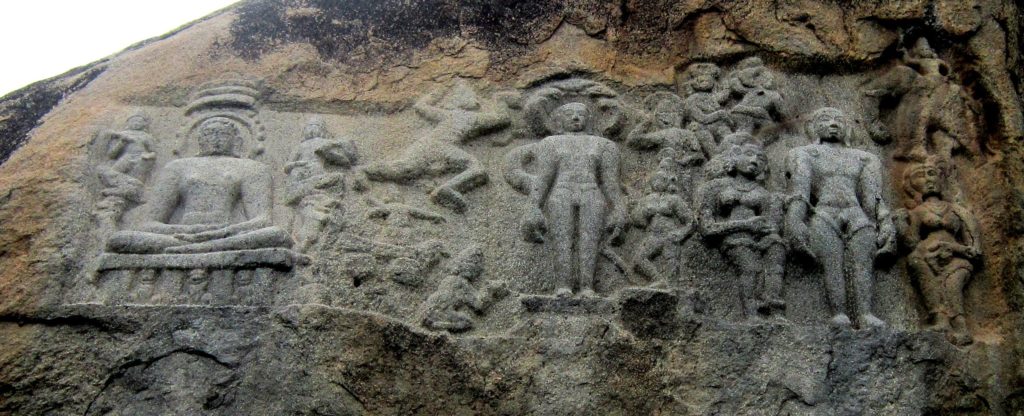
But how does this matter to the Jati Varna matrix? The initial conception of Varna sees it as a natural order of things (not unlike stratification seen in most ancient societies). Moreover, this conception is in no way rejected by the Sramana traditions even Buddhism – thought Buddha did not give Varna the emphasis it received from the Vedic Brahmanas. Even today caste is practiced in the Jainas. So how did the conception of Karmic retribution affect this system? The answer seems obvious enough. It meant that the position of one in the Varna hierarchy could be justified as the fruit of Karma of previous births and not only as a Natural order. In other words, the ritual status was awarded to certain births for their good Karma and vice-versa. In many ways, Karmic retribution is a fundamental shift from the “this-worldly” ways of the composers of Rigveda.
This change is captured in the Bhagavat Gita, arguably the most important book of the Hindu canon. While there continue to be many interpretations of the doctrine of Karma espoused in the Gita, the one reading tells us to fulfill the Dharma (of your Varna/ Position/ Situation) with the implication that it would result in Good Karma and better Rebirths – the ultimate aim of Moksha notwithstanding. That indeed seems to be one of the simplistic messages of the Gita which would have begun spreading in the society with the final versions of Mahabharata. The prescriptive Manusmriti is one thing, but the bonafide revelation of Gita is another (though it is not my point that Karmic retribution is the core message of Gita but it is hard to argue against it being a vehicle of the spread of these memes). This doesn’t mean that Varna became birth-based at this moment in history – it is fair to assume it always was at least partially birth-based though more flexible. But we can state that at this stage, one’s Birth became Karma-based and Varna also became inextricably linked to Karma.
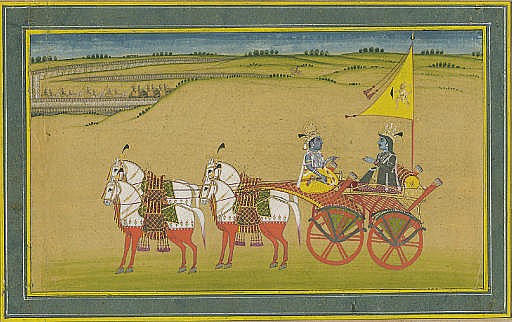
This could have resulted in two primary effects:
- It would mitigate the sense of injustice perceived by sections of the society who had it tough. The injustice of birth was not injustice but the karmic justice of previous births.
- It associated “ritual Varna hierarchy and division of labor” with moral dimension (Karma of previous birth). Potentially this moral dimension would buttress the existing Varna hierarchy.
It’s easy to imagine how this would in turn result in decreasing porousness between Varnas. Incidentally, this is attested through the first/second-century inscription near Nasik by Brahmana Satavahana Queen Gotami, which praises how her son prevented the mixing of the Varnas. This is one of the most solidly dated references against the mixing of Varnas (as it is an inscription) issued by a political authority (not just religious abstractions).
However in a pre-modern subcontinent without a strong centralized state, these ideas would have spread very slowly through the network of Brahmins and various (particularly) Vaishnava sects through the vehicle of Gita. The Hindu Golden age of the Imperial Vaishnavite Guptas – who ruled the second-largest and arguably the richest empire of ancient India, in the fourth/fifth century AD nicely correlates with these timelines. Thus we could say that by the time of the Huna invasions of the 5th and 6th century the Varna ossification was prevalent, but even that doesn’t explain the complete story. Still, we have no philosophical or scriptural basis for Jati endogamy.
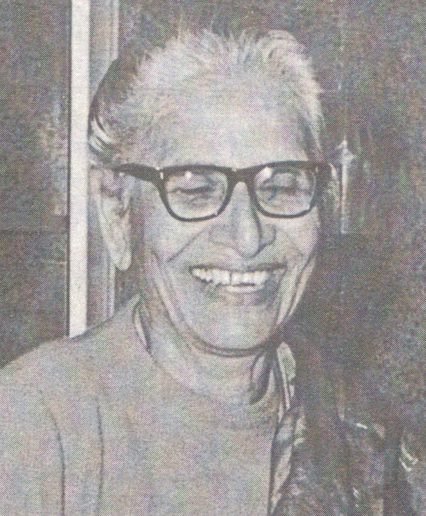
Anthropologist Irawati Karve in her book “Hindu society” was one of the earliest to claim that the Jati system was a pre-Aryan reality upon which the abstraction of the Aryan Varna system was imposed. Academically her work has been contested and not accepted in mainstream Indology, but her case is very compelling, given that it is based on her immense fieldwork in “Non-Aryan” tribes who have maintain very strict endogamy. But how does her thesis map onto what we know from genetics? Endogamy in India roughly seems to have ossified between 0 AD and 500 AD but who is to say that less rigid endogamy (not detectable) was not the norm earlier? Is it possible that the self-conception of Jatis is indeed is an ancient Pre-Aryan reality that was less rigid during the Vedic times? Clearly, there are no easy answers as all we can do is speculate and wait for Ancient DNA from India to show if there existed any pre-Aryan structure in the populations of the Indus valley.
Many tribal (hunter-gatherer) societies have endogamy baked into their cultures. But generally, as these tribal societies get integrated into the agricultural societies, this endogamy tends to break down – as evident for recent genetic findings (particularly Europe). But what if the tribal societies which integrated into the emerging Urban civilizations (first the Indus and then the Ganga) , never fully gave up their tribal/clan identities? The hundreds of excavated IVC villages point to sophisticated trade/occupational specialization. If both the sexes work in their ancestral trades per se, it would naturally result in tribal endogamy as it makes occupational sense. But that would not necessarily lead to rigid endogamy to the levels we see in the subcontinent- probably because this doesn’t exist elsewhere in the world. Though the identities of groups by kinship (precursor to Jati) may have existed even before the Varna system began to take form (let alone become rigid).
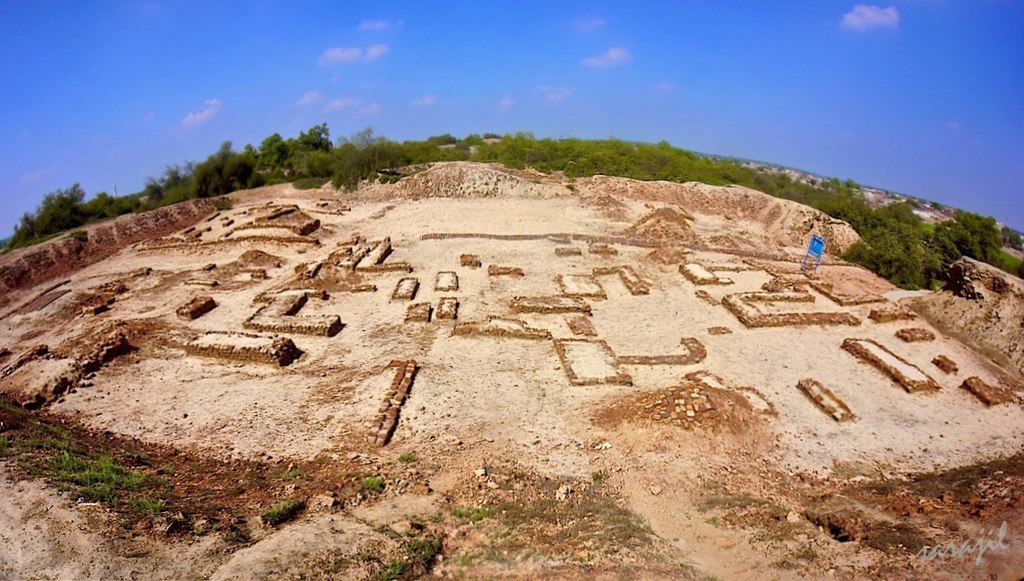
But why does this Jati endogamy become sharper with the ossification of the Varna system? Some take the explanation as Jatis arising out of the mixing of Varnas seriously, but that thesis (ludicrous imo) can be jettisoned without a second thought as Jatis exists even in those who are outside the Varna hierarchies. A potential answer may again lie in the doctrine of Karmic retribution.
Unlike the original simplistic Varna hierarchy – the concept of Karmic retribution enables hierarchies within hierarchies. Every Jati can be ranked within the Varna hierarchy based on the perceived moral inheritance (Karma) of their profession. Additionally, better births and even salvation are promised to the ones following their Jati-Varna Dharma. Thus Jatis would have both religious as well as occupational/cultural reasons for enforcing stricter endogamy which is far more believable than assuming these norms were somehow imposed across the subcontinent in pre-modern times by machinations of Dvija Varnas.
None of the above points are sufficient but all are necessary to explain the great vivisection of Indian society. Chronologically first the kinship-based (not gotra) groups were integrated into the expanding Aryavarta both culturally and genetically while the late Vedic abstractions of Varna and ritual purity began to take root in the orthodox Vedic traditions. When the rudimentary conceptions (Vedic or non-Vedic) of Karma and Rebirth were taken up by the Sramanas, taking them to a complex, philosophical, and rigorous extreme, they began to affect the Vedic philosophies.
In essence, the religious innovations of Karma, Rebirth and Dharma when coupled with pre-existing concepts of Varna, ritual purity, and tribal occupational endogamy conjure up a perfect storm that continues to flow through the blood of around 1/4th of humanity, in form of thousands of distinct streams.
Post Script:
- What is not discussed above is the impact on the subcontinent of the violent Huna invasions which along with internal strife resulted in the collapse of the Gupta empire. The rapid de-urbanization which is speculated to have occurred in the fifth and sixth centuries would have also played a crucial role in this ossification. The second millennium with the Turkic invasions would have also played some role in the maintenance of this now-steady state.
- I continue to have a lot of doubts about the above speculations, but when I read books on Indology and Indian prehistory, I find even more tenuous speculations (made by professional academics) than the ones I have proceeded to make in this essay. At least these speculations seem to align with the history alluded by the genetic data of caste (Or I have made them align).
- I had thought along these lines even before reading about the interactions of Brahmanas and Sramanas but while reading the Greater Magadha thesis and following a YouTube seminar I thought the thrust of my current argument was staring me in the eye. I expected someone to draw the conclusions I had drawn, but was extremely surprised than no one has gone there.
- The references for this essay are numerous and diverse to be noted here. Anyone interested please reach out to me.
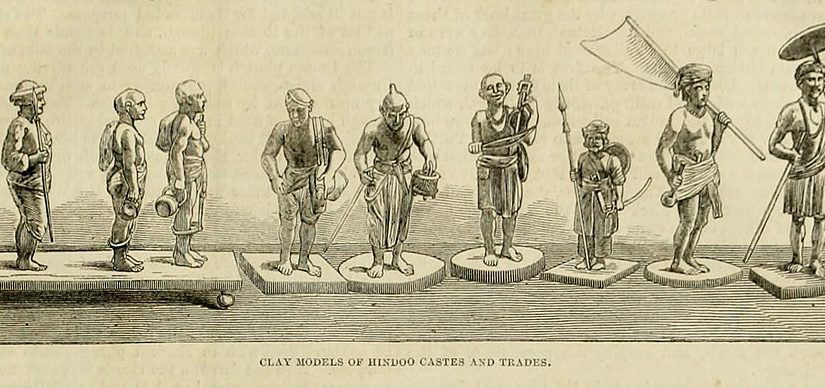
What gives your Karma theory plausibility is the fact that there was no, literally not even one recorded revolt by the Lower castes who were easily the Majority.
Like bro- do you think a minority group pulled up and exploited the shit out of other groups without any other rebellion. The only explanation is even the lower castes gave into this, as you explained
Lelu bhau, how big is the whole Buddhist-Dalit-Ambedkar thing is in MH? Do they consider themselves totally separate from other Hindus, AKA not partaking in Ganpati etc?
The leaders try – but i reckon Ganpati becomes too fun and too rowdy for most to miss out – though some no doubt give it a miss
//But how does her thesis map onto what we know from genetics? Endogamy in India roughly seems to have ossified between 0 AD and 500 AD//
could you please share the genetics paper for this conclusion? many endogamous communities formed quite early, according to Narasimhan 2019, if I remember correctly.
Does it? Only claims to older endogamy are from some Y and mtDNA papers from early 2000s that i have read – they seem to date it back to 4-5k.
Reich’s book makes it clear to ~2000 YO ; Razib has said in recent CH and blogposts it could be 1500 YO. Hence 0-500.
From Naramsimhan 2019 supplementary information

source: https://www.ncbi.nlm.nih.gov/pmc/articles/PMC6822619/bin/NIHMS1053677-supplement-Table_S1-S5.xlsx
yes. please check table S5 in supplementary excel file from Narasimhan 2019. ALDER runs clearly show many castes formed quite early even before 1000 BCE
Yes- but because i am not a geneticist i would rely not on this but on interpretation of the genetic data by geneticists right.
@razibkhan clearly knows this yet he has claimed at multiple forums that endogamy became rigid around 0-500 AD.
Unless I am mistaken these dates refer to the ANI-ASI mixing dates – or IVC / AASI & Steppe/IVC mixing dates but not the dates of stricter endogamy which we take in today. I would say this particular this is not a given
Interesting.
Some scholars have postulated that there was an undercurrent of Kshatriya vs. Brhamin rivalry, and that was why the Sramana movements took off as Kshatriyas aligned themselves with Sramanas. Many (most?) of the pre Shunga rulers of Magadha were Jains or Buddhists.
The Shwetamber Jain version of the story of the birth of Vardhaman Mahavir puts his embryo in the womb of a Brahmin woman. When Indra and other gods find out that child is destined to be a Chakravarti (world conqueror of the spiritual or material domains), they transfer the embryo to the womb of Trishala, the wife of a chief of one of the republics in Northern Bihar (Vaishali). Apparently a chakravarti could only be born in a Kshatriya family, and not a “lowly” Brahmin one.
This could also be a later addition to the mythology as Jainas and Brahmins (and Buddhists) competed for followers. However, it is consistent with the background of all Tirthankars as well as notable followers of the religion in the early years – Kshatriya kings, nobles. There are also many stories of notable Shreshthis ( wealthy merchants) but hardly any of of Brahmin converts (there are some exceptions – the chief disciple of Mahavir in his lifetime was one Indrabhuti Gautam – assuming of the Gautam gotra).
From Jain stories, it is clear that Magadha is IndoAryan in terms of language (Prakrit, Pali) and mythos (Indra is a major god who makes appearances throughout the story of Mahavir – as a God subservient to the Tirthankars). Yet, the region seems to be lightly Vedic-ized or Brahmanized. Could it be that Magadha was the preserve of the old elites? Or that Vedic religion really just formed in the plains of Haryana after some Indo-Aryans had already moved east. Or that Indo-Aryan languages are native to India from prehistory (aligned with AIT)
If i remember correctly it is Kesavan Veluthat’s theory.
Interesting.
Some scholars have ——– the pre Shunga rulers of Magadha were Jains or Buddhists.
I think they are later claimed by Jainas or Buddhists. Not that its opposite has any basis – that they were Brahmanical. For all we know they were just leaders who had no qualms indulging in violence which saw a reaction in form of non-violence
The Shwetamber Jain version of the story of the birth of Vardhaman Mahavir puts his embryo in the womb of a Brahmin woman. ——–
Yeah those trads never quite rejected the supremacy aspect of Varna system – they just seem to prefer Ksh over Br.
From Jain stories, it is clear that Magadha is IndoAryan —- to India from prehistory (aligned with AIT)
My belief is that Rigveda/Vedas are just the memory of emerging Puru/Kuru clain among the Vedic Arya. What others thought and did is not directly remembered but can be extrapolated by texts like A-Veda, and other vedic canon. So yes – Magadha could have been home of earlier or later waves of Arya
In Roots of Hinduism, Parpola supports the idea that there were multiple proto-Skrt speaking tribes that moved across the gangetic plane at different times and that the Rig Vedic Aryans were not the first. So it is reasonable that the earlier ones (maybe including the composers of Atharva Veda) moved further east than the later ones.
If we look at the Siva purana and the marriage of Siva with Sati, it is interesting that the legend marries Siva (very likely a pre Vedic local god) to the daughter of Daksha and not Indra. So Daksha must have been an important figure for the earlier migrants, hence the Rig Veda could not have been their canon.
Ideas existed before, but after Kushans and Hun invasions and ending of gupta empire and de urbanization, this probably took over. Purity mania, along with preserving instincts of social status, bloodlines etc. Like the samurai were poor and yet respected, the instinct was to preserve honor even as society decayed. We are poor but we kept our bloodlines, status pure.And others imitate the elites all the way. To be honest, I think this is the most important and interesting question in all of Indian history. Another is to see the value of literature, writing, In Gupta empire, we reach the golden age, so things were being put down in writing beginning with asoka and from 2000 yrs to 1500 yrs back from now. As the knowledge was the preserve of brahmins and were a form of oral memory , putting it down as writing created a potential competition , the possibility of their services now being of no value as anyone can potentially read and gain access knowledge and validity. So, in order to preserve own jobs, status, people went down this way and others imitated. Imitation of elites is one of the important features in my view.
Have you read “The Snake and the Mongoose” by Nathan McGovern? He critiques the idea of the Brahmanas and Shramanas being opposed to each other.
Apparently, the earliest mention of the Shramanas is actually in Taittiriya Aranyaka, which belongs to the Black Yajurveda, and Shramana in this context referred to “Brahmin ascetics”. There are also references of the Greeks referring to the “Shramanas” as “Brahmin ascetics”. There were apparently hundreds of Shramana sects, but these other sects (including the Ajivikas) were wiped out, and the Buddhists/Jains took over the Shramana identity for themselves.
A short Twitter thread which I got the info from along with screenshots of the book. https://twitter.com/sacralwitch/status/1379455023306969092
I have not read the book – but read it’s reviews and some of its free pages. Yes those points seem pretty legit – but my aim here was limited so didn’t go into it
The strange thing is that even Hindus who give up there religious identity to convert to Islam or Christianity do not want to give up there caste/jati identity . Maybe it is a lineage thing or due to reservation. Caste identities in the unreserved layer are churning but in reserved categories people want it to continue. With reservation reaching 70% . The same saga continues with different names. The reason caste endured for so long is because most people are content if there socio economic status is similar to their fathers. Also in ancient Times people migrated as groups/clans. So if the non landowning castes felt like moving higher they moved to another area and declared themselves of higher varna or even mixed varna.
Before the Turki invasion this movement happened regular ly. Later the shock and brutality of invasion paralysed the varna into fossil. And the invaders did not much care for the lower castes viewing them as they viewed slaves. They were more bothered about taking power and land and adding the elite to there ranks via conversion to gain legitimacy.
The problem of relying on Karma theory is that there was clearly no consensus on Karma theory esp. if one considers all forms of sources – Religious texts, Epigraphs, Manuscripts, archaeology etc. & extending it further to linguistic & regional developments claims of consensus become even more untanable.
Here are few scholars i have not seen you quoted –
Brajadulal Chattopadhyaya or B. Chattopadhyaya
Ryosuke Furui
Manu V. Devadevan
Timothy Lubin – {Esp. with regards to ancient legal understanding & worldview}
P.S. – If you want religious sources.
Rta – To hold
https://en.wikipedia.org/wiki/Apastamba_Dharmasutra#Significance
So ritualists acted as negotiators & legitimizers for local chiefs this gave Brahmins the position they have noted in ancient texts but everything else was contested.
Sorry for another post but this is to clarify ‘Rta’ means Rta as it has been used in the Vedas.
https://en.wikipedia.org/wiki/%E1%B9%9Ata
In the Wiki article you can also note the connection between the idea of Rta with Dharma.
Another point is that you are not noting lifestyle changes or class divergences which supported the prior tribalistic notions & preserved endogamous distinctions amongst groups. You seem to be over relying on interpreting social reality from religious texts which is the same mistake Orientalists did {too many theories based on religious texts}.
This review highlights the kind of nuances & transformations i am trying to highlight, review by Kumkum Roy –
https://www.academia.edu/59862259/On_the_concept_of_Bharatavarsha
Anthropologist Irawati Karve in her book “Hindu society” was one of the earliest to claim that the Jati system was a pre-Aryan reality upon which the abstraction of the Aryan Varna system was imposed.
i think this is right. there is genetic difference btwn dalits and non-dalits in south India besides brahmins
@razib,
is this genetic difference between dalits and farming castes of south india detectable in terms of Y haplogroups?
once again, the AASI is at the bottom. Wonder if IVC had caste and more AASI at bottom there
Since there is no indication of a strong government/authority that spanned the IVC and funded grand projects like Mohenjadaro, one possibility is that even with a relatively weak government, the cities could have been built and managed by carving out effort among various occupational castes who were forbidden to do anything else. Of course this raises the question who did the forbidding, but it could have evolved over the span of the IVC.
You don’t need to do the forbidding if you can take hold of a region which has resources for certain kinds of material production & if mastery of your craft gets acknowledged across multiple kingdoms then you gain multiple sources {Trading groups, local people & Royalties} patronizing your work.
Note – The primacy of Group i.e. Tribe, community or group in every stage.
You can maintain these connections for long by retaining Endogamy & Languages {probably more of a necessity considering limitations & instability of the period}. So rather than any singular overarching structure group hegemony dependent upon local knowledge of region & arts/crafts which could flourish in those regions. It was more of a ‘being in the correct place at correct time’ than so & so group being intentionally oppressive.
R.C Majumdar also opines in his book the Vedic age where he mentions that the concept of purity and pollution existed before Aryans due to “black magic and pure blood etc” which existed even before Pre Dravidian totemic culture. Aryan fucks just added fuel to the fire due to invasion of Scythians Greeks and Kushanas and increasing the ranks of “degraded Kshatriyas”.
I think you guys are missing the point. It has been pointed out that societies collapse and rise on the basis of the people living in it. Harsh conditions would favor eugenic effects that would increase the population of high-intelligent peoples, which would later create more competent people to run this society. This was pointed out in the book by edward dutton et al, explaining how the UK went from 90 to 115 IQ between the Middle Ages and the Victorian Era, which enabled rapid innovation and have a population capable of managing a multi-continental Empire. I see this trend in Indian society as well, such as the Greeks claiming that the Kshatriya class in the Mauryan Empire, which made up not just the warrior elite, but also the administrators of the Empire, the second largest block/class of people in the empire. The reason why Brahmins were on top was because of their high competence in running Indian Societies (or high iq/personality traits such as openness), as well as some of their ritual significance. The equivalent of brahmins in India when the aryans invaded would be the persians during the Early Islamic Empire, which administrated much of the Empire. This is due to them being the ‘civilised elites’ when the arabs arrived, the latter who were desert nomads, with little administrative capability outside few northern arab kingdoms. Brahmins IMO are essentially IVC elites, who married extensively with Vedic Aryans, as pointed out by Razib that much of them have IVC Y-haplogroups. They knew how to run the society, being part of the ‘Indian-Cline’ at least gave them more touch with pre-vedic peoples, and hence their dominance since pre-vedic times.
IIRC Dutton takes Woddley type estimations. Piffer’s estimates seem more sound.
It would be interesting to know the endogamy among brahmin community and kshatriya community. Study of elites is the most important thing in my view to understand this. If one knows which group of brahmin/kshatriya groups and which larger numbers were the earliest to undergo endogamy, their geography, the relative rate of change in endogamy of different groups , it would give a very good understanding of the changes and the approx period. And one could go from there. It is incredible that Indian historians are neglecting genetics to help answer this incredible question. Genetics wont tell us the politics of the time, but it will give us the period and help us focus on the particular period to focus on. And then we can focus on the conditions and the politics and ideas of the period. Indian govt should focus and fund this initiative. Being an ostrich is foolish, science will reveal as much as possible, better politics is served by coopting the best science and narrative can always be made rational .Think of it the other way, if someone outside engages in this research, and comes out with a dubious pol agenda( we will have no control on that at all), then Indian people and govt will be left out. And current RW H groups will be left looking like idiots. It is more important to prevent the negative dubious pol agenda of others than trying to establish a positive case for oneself. It has been the case for long that Indians react than be proactive. Most certainly for H rw groups.
IDK about things going forward but thus far like in 2009, the Harvard scientists collaborating with Indian scientists capitulated and came up with the ANI ASI paradigm which started getting separated in 2010 into a 3 population paradigm instead (and this was in spite of David Reich being among the less compromising major scientist in the field).
But things have changed and now indigenous politics could add an impact as you said. I say this because now there will be more arguments about who is more indigenous and thus who should be more listened to (potentially being played as proxies in the most pessimistic scenario). Things like this weren’t as crucial in the past.